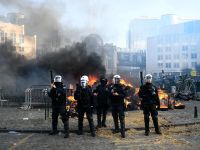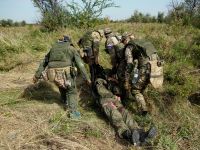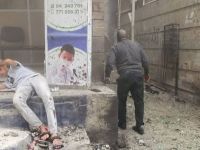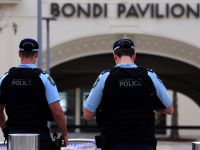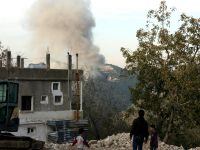Syrian government and rebel forces are locked in battle around the ancient city of Aleppo, while an estimated 250,000 to 300,000 civilians are trapped in the rebel-held eastern sector of the city.
Here is a quick look at what is happening and why it matters.
Why does Aleppo matter?
It was Syria’s largest city before the war and it’s the main urban centre in the north of the country, where most rebel forces are concentrated. Since 2012 it has been divided between a government-held western sector and the rebel-held east.
If the government can regain full control, it will hold all of Syria’s major cities, cementing its claim to rule.
What is the focus of the current fighting?
In early July, the government capturing the last supply route to the east, the Castello Road on the city’s north-western outskirts. That threatens a siege that could slowly strangle the eastern sector and finally bring the whole city back under government control.
On Sunday, rebels outside the city launched an offensive on the south-western outskirts hoping to force a new route through to the eastern sector.
Who are the main forces on each side?
With the Syrian army in disarray after five years of war, a range of militias including local forces and pro-Iranian Shiite groups from outside Syria are doing much of the fighting on the government side.
On the rebel side, a range of rebel groups, including hardline Islamists and more moderate groups that have enjoyed US backing, are fighting inside Aleppo.
The Fatah al-Sham Front, which until last week was the official Syrian branch of al-Qaeda and was called the al-Nusra Front, seems to be the main force behind the new offensive in the south-west.
What is the situation like in eastern Aleppo?
Dire, according to local officials, residents and humanitarian organizations. The UN says there is only enough food to last until the middle of August and has called for a weekly 48-hour pause for humanitarian access.
Local officials say there are only about 20 medical specialists left. Last month five hospitals were put out of action by government airstrikes in one day, leaving only two still functioning.
Infrastructure has been devastated by four years of shelling and airstrikes that have killed hundreds in recent months.
What is the situation like in western Aleppo?
Infrastructure is largely intact but hundreds of civilians have been killed in an uptick in rebel shelling since April, according to the Syrian Observatory for Human Rights.




